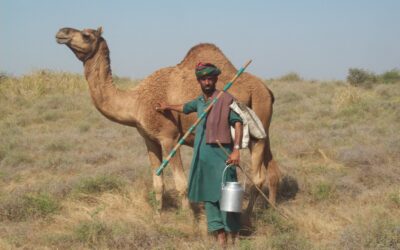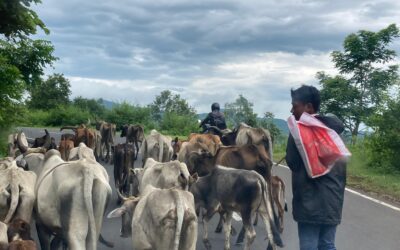Having spent my early childhood in a small village of Kamalanagar in Chawngte, Mizoram and living half of my 26 years in different cities of India, I have been fortunate enough to experience different flavors of life.
This post is about an experience from Madar Village in Udaipur, Rajasthan, which took me back to one of my childhood memories. When I first entered the village, a plant caught my attention. I still do not know its name but it struck me because as a child I used to pluck its leaves and blow bubbles through the liquid that comes out from breaking the petiole. This time also, I could not resist doing the same. It was one of those small things that gave me an immense joy.
However, as I grew up and explored different parts of the country, I realized that there are several aspects that I couldn’t recognize when I was confined in my village. The first time I tried to understand a rural setup outside of Northeast India was at Pavnar in Maharashtra. It had felt like I’ve come from an entirely different world, not better or worse but unique, with its own flavor. Increasingly, it became clear that each village, or rather each place has its own flavor which can be bitter, sweet or sour. Some may take time to be identified or remain unidentified.
As I spent some time in Madar, I quickly noticed the drastic differences between Kamalanagar and Madar. To begin with, there is no caste discrimination in my village as there was in Madar, though, there is racial-religious discrimination between Mizo and Chakma community back in Kamalanagar.
You won’t see much cattle rearing or grazing in Kamalanagar but lots of people do Poultry farming. Farmers don’t have crops in abundance there, though, they do grow a variety of fruits. You won’t smell spices (masala) there, rather you’ll get to smell fermented shrimp and fish with different types of herbs. More than Indian brands of snacks, you will find Burmese brands. The count of Bamboo houses is more than the Pakka (concrete) houses.
Elder women there don’t wear Ghagra (skirt), Choli (blouse) and Odhni (scarf to cover face). Their everyday attire is a Pinon (Wrap around skirt) and Khadi (cloth to cover the body) along with blouse. Similarly, men don’t wear Dhoti (wrap around on lower body), Kurta (upper top) and Phagri (head cover), but simple trousers and shirt. Unlike, the thick and stylish moustache here, the men in my village are clean shaven or have light moustache. In Kamalanagar, it’s easier to spot mixed groups of girls and boys together which is a rare sight here.
In spite of the evidently contrast cultural practices, I found some common flavors in both the villages, too.
If you are an outsider in Northeastern part of India, you are going to be perceived as a ‘Banghaal’, meaning ‘Bengali’. No matter what your cultural identity may be, it would be difficult to convince locals that you are not a ‘Banghaal’. The religion is often assumed to be Hindu. And all these assumptions are built up because of the so called ‘Banghaal’ has bigger eyes and sharper nose.
Likewise, whenever I visit any village outside Northeast India, I’m perceived as a Nepali, Chinese, Japanese, etc. Irrespective of my cultural or religious identity, it becomes difficult to convince people that I am an Indian. When I succeed in explaining people that I am from Mizoram and that it is a part of India, they ask my caste. And when they get to know that I am not a Hindu, they want to know my religion. Just to convince them that I, too, have some religious faith, I say that I am a Buddhist.
Apart from these bigger social similarities, there are certain commonalities in our day-to-day lives as well. The rivers in both the villages are quite a significant social hub for the rural women. Just like how parents in Madar are working hard to ensure that their children get good education, parents in my village do so too. As the young women in Madar have high hopes and aspirations, girls in my village also have them. I, being one of them, feel glad to be able to relate with more such young women outside my village.




0 Comments